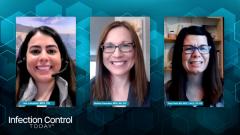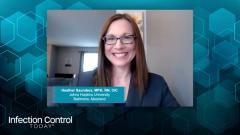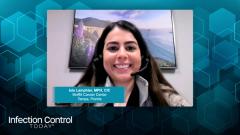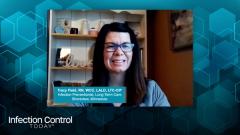
Guidelines for Selecting and Wearing PPE
Heather Saunders, MPH, RN, CIC; Tracy Field, RN, WCC, LALD, LTC- CIP; and Isis Lamphier, MPH, CIC, review CDC, OSHEA, NIOSH, and American Society of Testing and Materials guidelines to selecting PPE and best practices for donning and doffing PPE.
Episodes in this series

Heather Saunders, MPH, RN, CIC: Let’s move on to talk a little bit about where PPE [personal protective equipment] falls into all the different measures that we take in infection prevention. Obviously, the use of personal protective equipment is just one measure of infection prevention. There are so many. I know the CDC [Centers for Disease Control and Prevention] had the hierarchy of controls, where they’ve spoken about PPE falling in order, amidst a multitude of different measures that we can use to prevent and control infection. So, can you just talk about that? Please comment on that a little bit, and where personal protective equipment falls in that hierarchy of controls?
Isis Lamphier, MPH, CIC: According to the CDC hierarchy, there are 4 levels. There are Levels A, B, C, and D. Level A will be selected when there’s the greatest risk of skin, respiratory, and eye protection required. B is when lesser skin protection is required, but you still need some respiratory protection. There’s also C and D. C is when the concentration and the type of airborne substance is known, and the criteria used for air-purifying respirators are met. D is very minimal protection, just for any natural contamination that might occur day-to-day in the type of work that you might be doing.
Heather Saunders, MPH, RN, CIC: In general, not just speaking about the COVID-19 pandemic, but how do clinicians or providers, other health care workers, decide what PPE needs to be worn? What requirements there are for providing care to various individuals?
Tracy Field, RN, WCC, LALD, LTC-CIP: Well, there are different levels of the contact precautions for an isolation patient. Also, there’s just general guidelines from the CDC as far as which pathogen we’re talking about, how it’s spread, and actually how to protect ourselves and our patients.
Isis Lamphier, MPH, CIC: There’s different governing bodies, too, like OSHA [Occupational Safety and Health Administration] that provides recommendations in their bloodborne pathogen and how to prevent exposure. Also, some facilities might have different teams that help pick out that PPE and what will be used as a standard of care in their specific facility, whether it’s their store, and they might have some input from their infection prevention department, or their occupational health department. And we have a lot of input from all different types of departments, ensuring that we’re all wearing PPE that will protect us, and is quality, as well.
Transcript edited for clarity
Newsletter
Stay prepared and protected with Infection Control Today's newsletter, delivering essential updates, best practices, and expert insights for infection preventionists.











